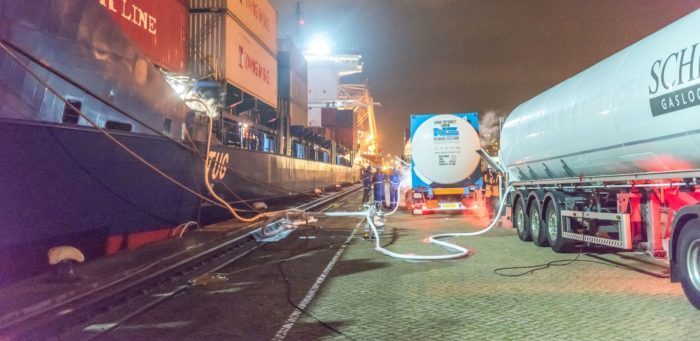In 2017, the sale of bunker oil in the Rotterdam bunker port was reduced from 10.1 million m3 to 9.9 million m3. The throughput of bunkered LNG increased from less than 100 tonnes to 1500 tonnes. Most bunkers contain fuel oil, in 2017, 8.3 million m3.
Approximately 1 to 1.5 million m3 of bunkered fuel oil consists of ultra-low sulfur fuel oil with a sulfur content lower than 0.1%. Ultra-low sulfur fuel oil has been used since 2015, when the permissible sulfur content in fuel oil went from 1.0 to 0.1% in the emission control areas of the North Sea, the Baltic Sea and the coasts along the US. The sales of these new products are not yet reflected in the figures of the port of Rotterdam.
[smlsubform prepend=”GET THE SAFETY4SEA IN YOUR INBOX!” showname=false emailtxt=”” emailholder=”Enter your email address” showsubmit=true submittxt=”Submit” jsthanks=false thankyou=”Thank you for subscribing to our mailing list”]
The increase in LNG bunkers was mainly caused because of Wes Amelie, the world’s first container ship that was converted to LNG propulsion. The vessel regularly bunkers at the City Terminal at the Prins Willem Alexanderhaven. Last year, Shell also launched the ocean-going vessel Cardissa. The vessel, which has Rotterdam as its work location, will supply customers in Europe with LNG from the Gate terminal in Rotterdam.






























































